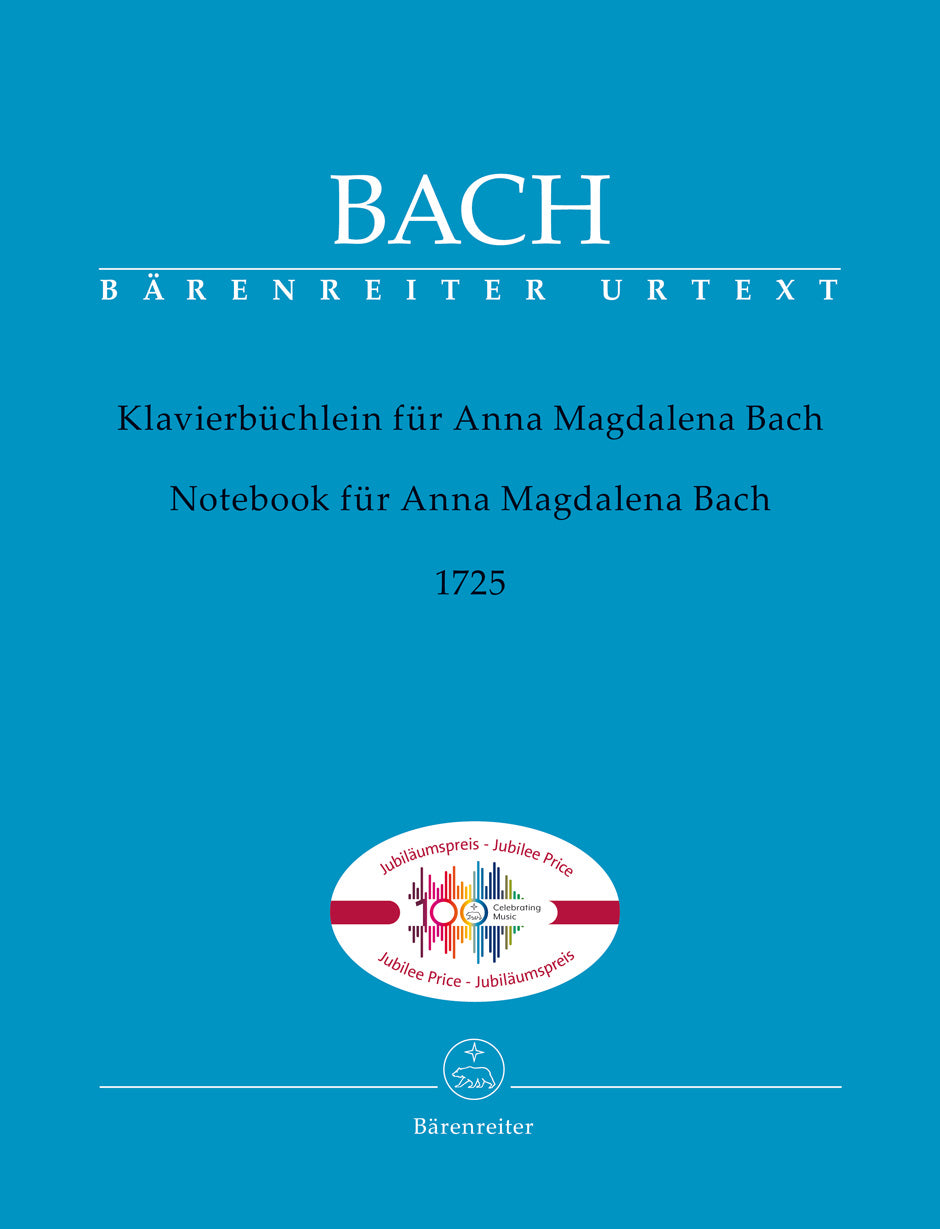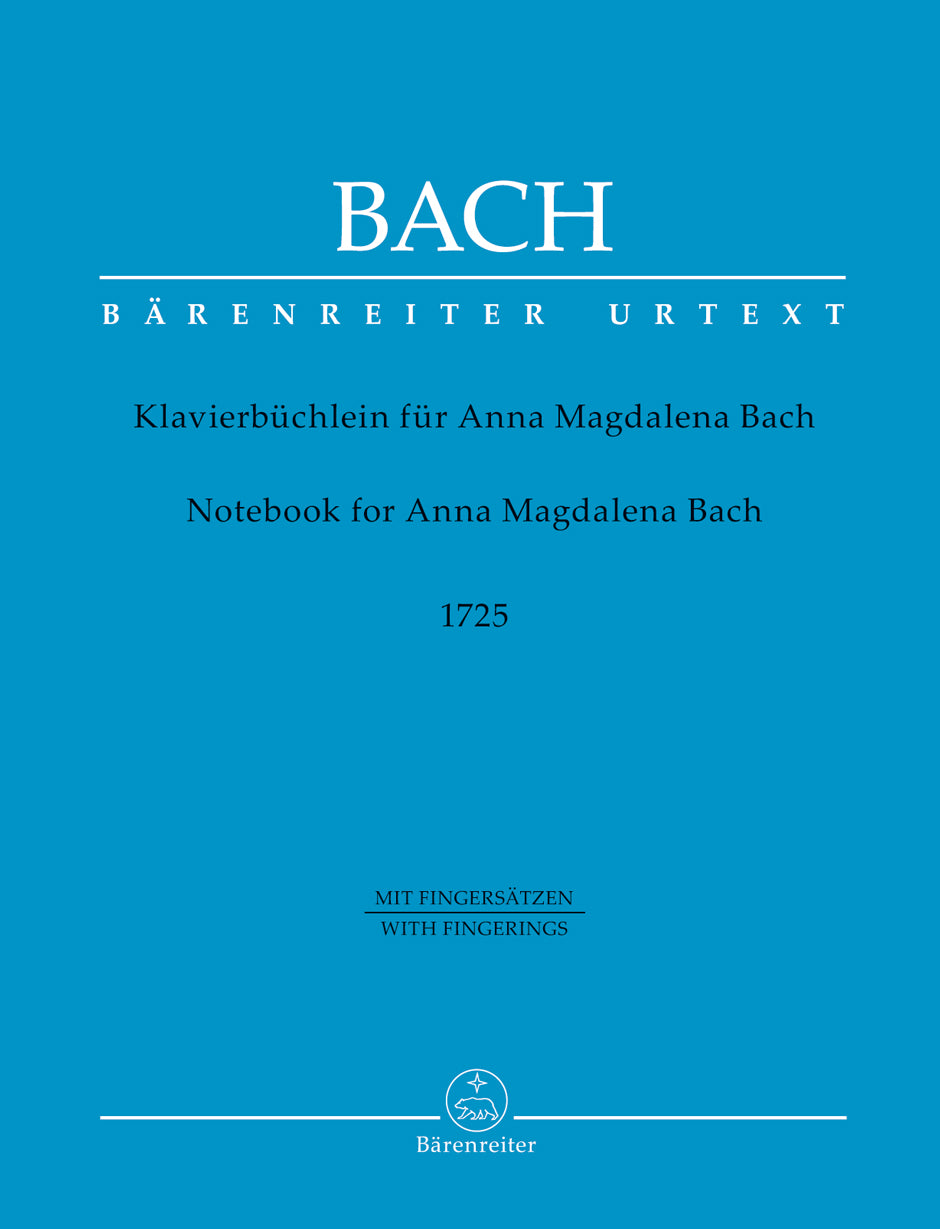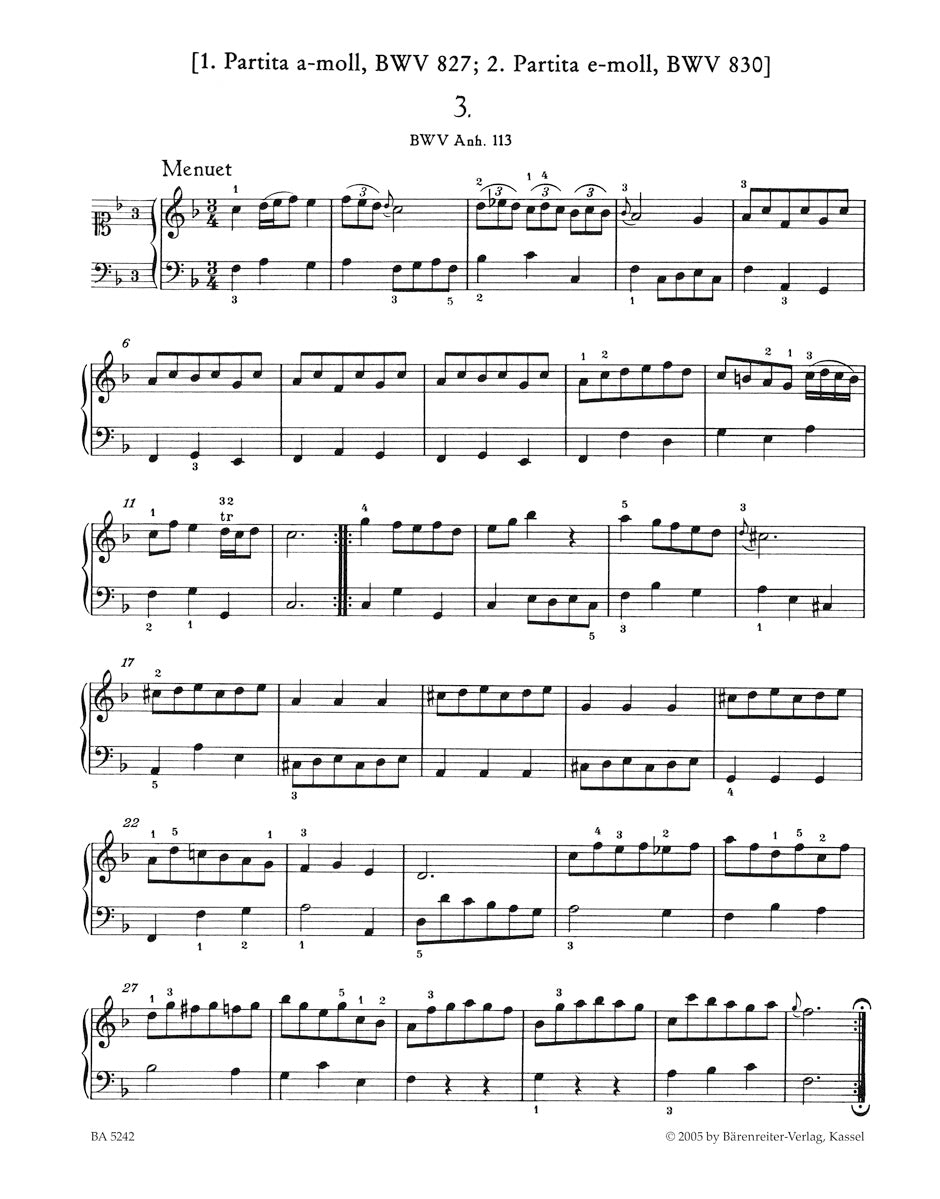Bach: Notebook for Anna Magdalena Bach
In stock and typically ships within 1 business day.
- Composer: Johann Sebastian Bach (1685-1750)
- Editor: Georg von Dadelsen
- Fingering: Renate Kretschmar-Fischer (1925-2016)
- Instrumentation: Piano
- Work: Chorale, BWV 514
- ISMN:
- Size: 9.6 x 12.2 inches
- Pages: 46
- Urtext / Critical Edition
Description
A mendicant woman from the Haynstrasse, aged 59 years, Anna Magdalena, née Wilckin, widow of Mr. Johann Sebastian Bach, cantor at the St. Thomas School" – thus reads the entry dated 29 February 1760 in the Leipzig "Ratsleichenbuch" (City Register of Deaths) for a woman whose name has become known throughout the world thanks to the two music books put together for her by Johann Sebastian Bach.
Bach himself opened the book with two of the large Partitas subsequently published in the first part of the "Clavierübung"; the rest of the contents was determined by Anna Magdalena. On the whole, these are short pieces of "galanterie": minuets, polonaises, marches, compositions by the elder children and attempts by the younger ones, little pieces, which she copied out of the family guest book and which had been written there more or less as tokens of friendship by the many visitors in the Bach home.
The fingerings which have been added by Renate Kretschmar-Fischer represent a selection among many conceivable options. They have been chosen with a particular eye to the inspiration that this marvellous volume from Bach's family circle can still impart to piano lessons today. in this sense, they also accommodate small hands searching for an ideal connection between physical dexterity, sensible voice-leading, and musical design.
Renate Kretschmar-Fischer studied in the master class of Conrad Hansen and was a scholarship holder at the Music Summer School in Bryanston (UK) where she worked with Arthur Schnabel, Monique Haas, Georges Enescu, Nadia Boulanger and Igor Stravinsky. for well over thirty years she taught as a professor at the Hochschule for Musik Detmold and was a jury member of numerous national and international competitions.
Publishers use a lot of words to describe what they sell, and we know it can be confusing. We've tried to be as clear as possible to make sure you get exactly what you are looking for. Below are descriptions of the terms that we use to describe the various formats that music often comes in.
Choral Score
A score for vocalists that only contains the vocal lines. The instrumental parts are not there for reference. Generally, cheaper than a vocal score and requires multiple copies for purchase.
Facsimile
Reproductions of the original hand-written scores from the composer.
Full Score
For ensemble music, this indicates that the edition contains all parts on a single system (there are not separate parts for each player). In larger ensembles, this is for the conductor.
Hardcover
Hardbound. Generally either linen-covered or half-leather.
Orchestral Parts
Similar to a wind set, this is a collection of parts. In the case of strings, the numbers listed are the number of copies included, though generally these are available individually (often with minimum quantities required).
Paperback
When publishers offer multiple bindings (e.g. hardcover) or study scores, this is the "standard" version. If you're planning to play the music, this is probably what you want.
Performance / Playing Score
A score of the music containing all parts on one system, intended for players to share. There are not separate parts for each player.
Set of Parts
For ensemble music, this indicates that there are separate individual parts for each player.
Solo Part with Piano Reduction
For solo pieces with orchestra, this is a version that contains a piano reduction of the orchestra parts. For piano pieces, two copies are typically needed for performance.
Study Score
A small (think choral size) copy of the complete score meant for studying, and not playing. They make great add-ons when learning concertos and small chamber works.
Vocal Score
A score prepared for vocalists that includes the piano/organ part or a reduction of the instrumental parts.
Wind Set
For orchestral music, this is a collection of wind and percussion parts. The specific quantities of each instrument are notated.
With Audio
In addition to the printed music, the edition contains recordings of the pieces. This may be an included CD, or access to files on the internet.
With / Without Fingering (Markings)
Some publishers prepare two copies - a pure Urtext edition that includes no fingering (or bowing) suggestions and a lightly edited version that includes a minimal number of editorial markings.







